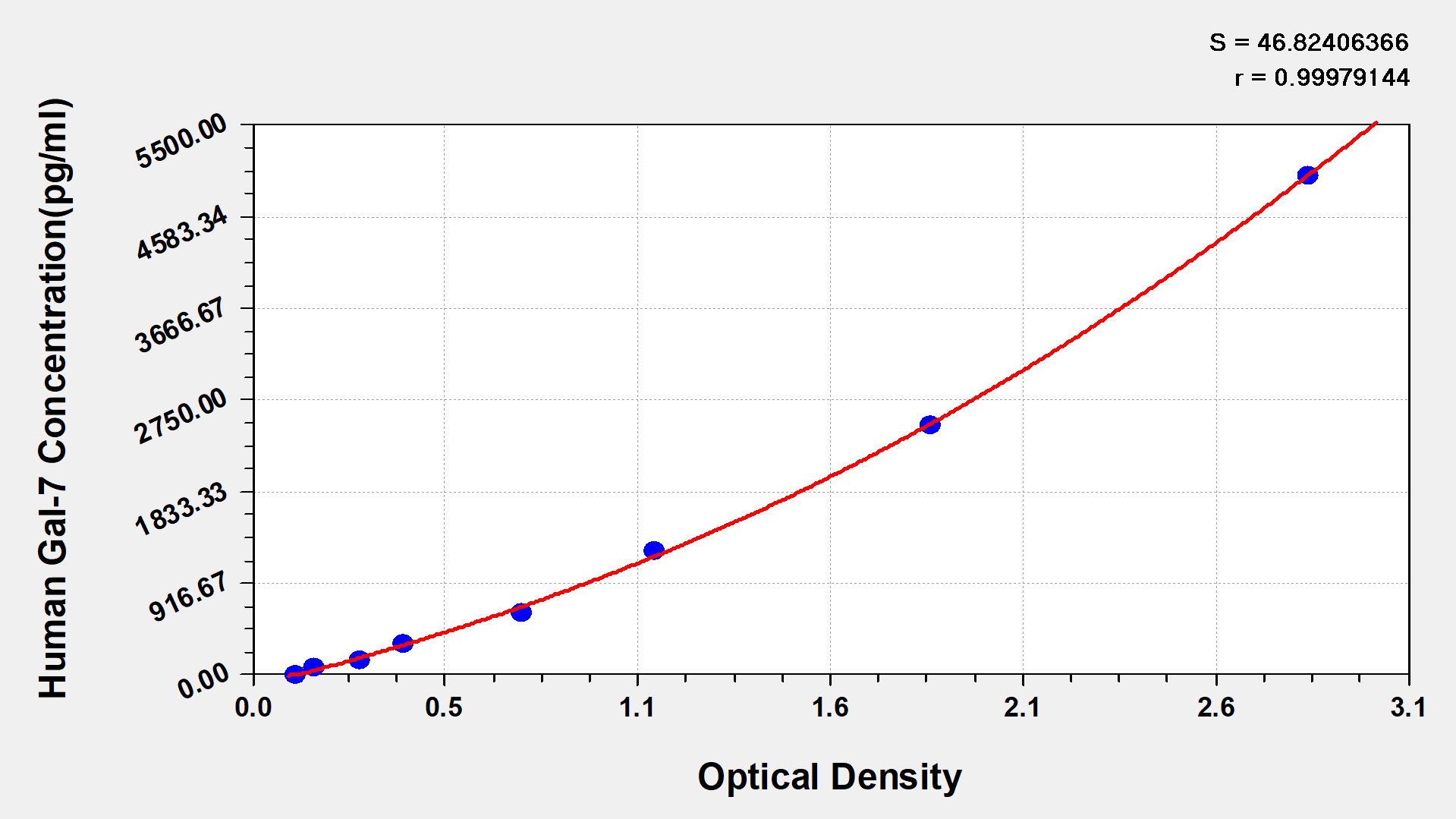Alternative Names
Gal-7 ELISA Kit; GAL7 ELISA Kit; Galectin 7B ELISA Kit; Galectin-7 ELISA Kit; HKL-14 ELISA Kit; Human keratinocyte lectin 14 ELISA Kit; Keratinocyte lectin 14 ELISA Kit; Lectin galactoside binding soluble 7 ELISA Kit; Lectin; galactoside binding; soluble; 7B ELISA Kit; LEG7_HUMAN ELISA Kit; LGALS7 ELISA Kit; LGALS7A ELISA Kit; LGALS7B ELISA Kit; P53 induced protein 1 ELISA Kit; p53-induced gene 1 protein ELISA Kit; Pi7 ELISA Kit; PIG1 ELISA Kit; TP53I1 ELISA Kit
Species
Homo sapiens (Human)
Sample Types
serum, plasma, tissue homogenates
Detection Range
78 pg/ml-5000 pg/ml
Detection Wavelength
450 nm
Assay Principle
quantitative
Precision
Intra-assay Precision (Precision within an assay): CV%<8% | | | |
Three samples of known concentration were tested twenty times on one plate to assess. | |
Inter-assay Precision (Precision between assays): CV%<10% | | | |
Three samples of known concentration were tested in twenty assays to assess. | | |
| Intra-Assay Precision | Inter-Assay Precision | Sample | 1 | 2 | 3 | 1 | 2 | 3 | n | 20 | 20 | 20 | 20 | 20 | 20 | Mean(pg/ml) | 644.292 | 616.477 | 630.349 | 622.774 | 649.379 | 631.614 | SD | 0.030 | 0.035 | 0.035 | 0.041 | 0.048 | 0.043 | CV(%) | 4.249 | 5.117 | 5.036 | 5.951 | 6.761 | 6.178 |
|
Linearity
To assess the linearity of the assay, samples were spiked with high concentrations of human Gal-7 in various matrices and diluted with the Sample Diluent to produce samples with values within the dynamic range of the assay. |
|
| Sample | Serum(n=4) | |
1:1 | Average % | 91 | |
Range % | 88-96 | |
1:2 | Average % | 95 | |
Range % | 90-102 | |
1:4 | Average % | 97 | |
Range % | 94-104 | |
1:8 | Average % | 101 | |
Range % | 95-105 | |
| | | | | | |
Recovery
The recovery of human Gal-7 spiked to levels throughout the range of the assay in various matrices was evaluated. Samples were diluted prior to assay as directed in the Sample Preparation section. |
|
Sample Type | Average % Recovery | Range | |
Serum (n=5) | 90 | 87-96 | |
EDTA plasma (n=4) | 98 | 95-103 | |
| | | | | | |
Typical Data
These standard curves are provided for demonstration only. A standard curve should be generated for each set of samples assayed. |
|

| | | | | | |
| | | | | | |
| | | | | | |
| | | | | | |
| | | | | | |
| | | | | | |
| | | | | | |
| | | | | | |
| | | | | | |
| | | | | | |
| | | | | | |
pg/ml | OD1 | OD2 | Average | Corrected | |
5000 | 2.819 | 2.910 | 2.865 | 2.739 | |
2500 | 1.857 | 1.830 | 1.844 | 1.718 | |
1250 | 1.140 | 1.057 | 1.099 | 0.973 | |
625 | 0.750 | 0.729 | 0.740 | 0.614 | |
312 | 0.422 | 0.422 | 0.422 | 0.296 | |
156 | 0.291 | 0.311 | 0.301 | 0.175 | |
78 | 0.183 | 0.177 | 0.180 | 0.054 | |
0 | 0.123 | 0.129 | 0.126 | | |
| | | | | | |
Storage
Store at 2-8°C. Please refer to protocol.
Lead Time
3-5 working days after you place the order, and it takes another 3-5 days for delivery via DHL or FedEx.






